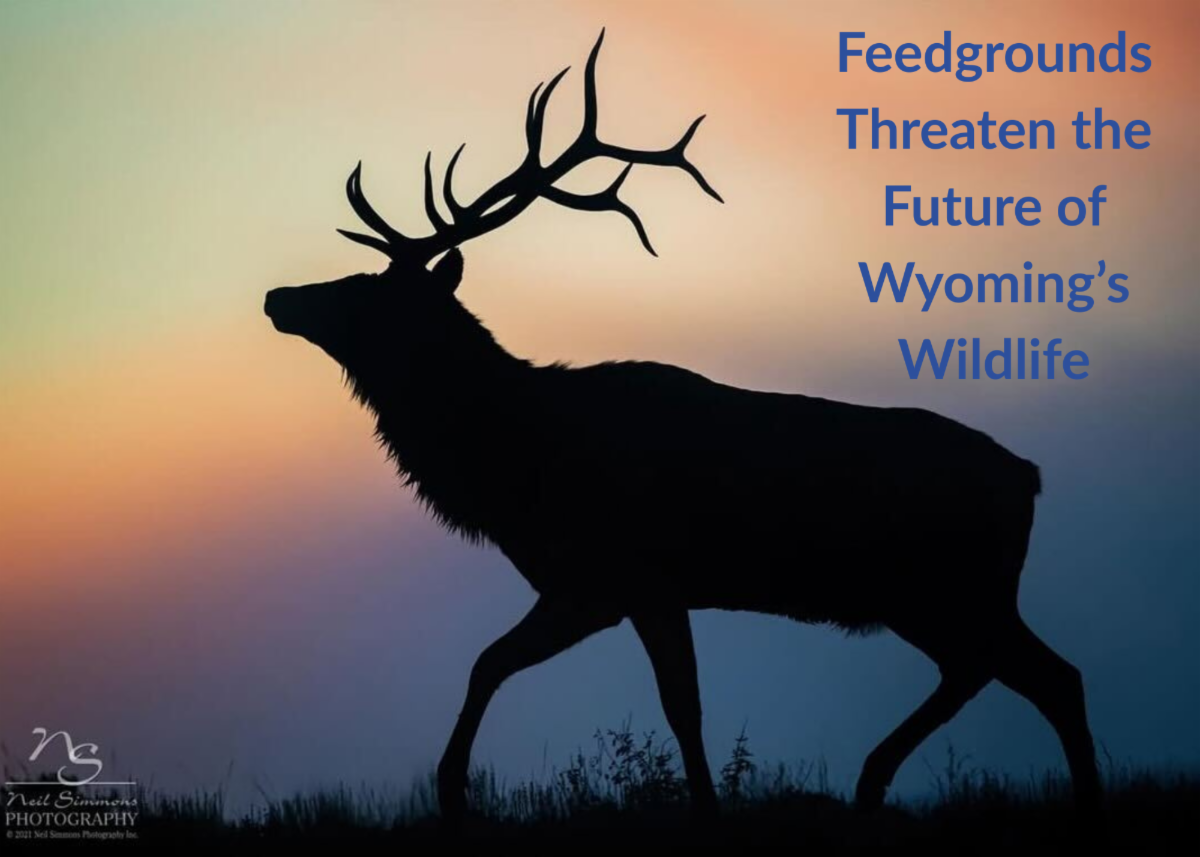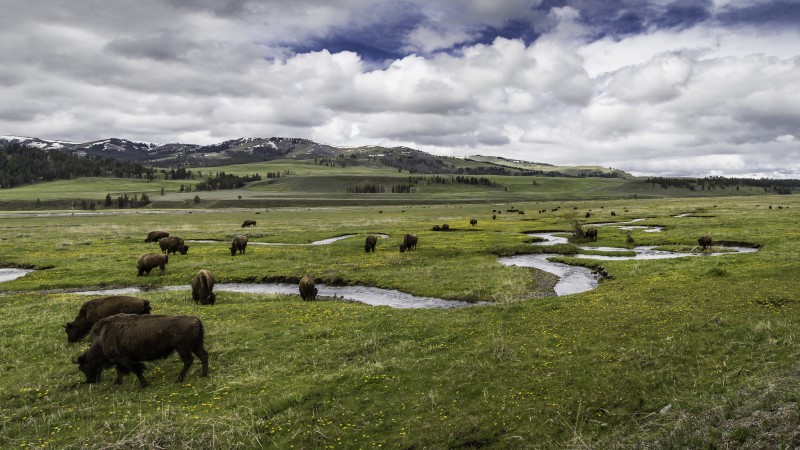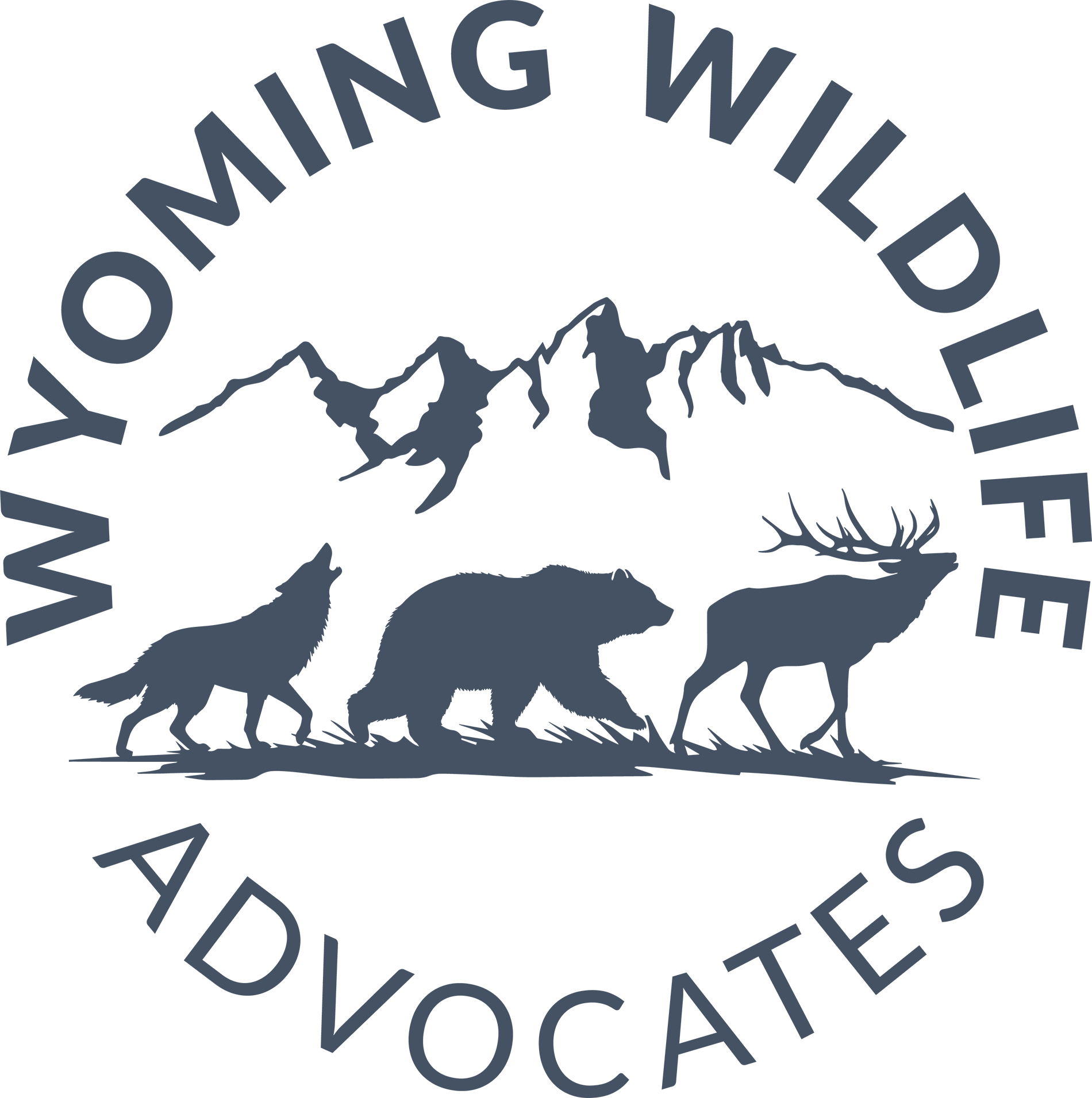|
ELK FEEDGROUNDS: A LEGACY OF DISEASE AND ECOLOGICAL DISTRUPTION
For over a century, winter feeding of elk in Wyoming has aimed to reduce mortality, enhance hunting, and protect agriculture. But science now shows these feedgrounds pose serious risks: they accelerate the spread of chronic wasting disease (CWD), brucellosis, and other infectious diseases while undermining elk health and the ecosystems they inhabit.
The Disease Threat
CWD spreads through saliva, urine, feces, and decomposing carcasses, persisting in the environment for years. Feedgrounds intensify this by forcing elk into dense aggregations during peak transmission, leading to prevalence rates far higher than in unfed populations. Brucellosis, which can infect elk, bison, cattle, and humans, spreads similarly, causing reproductive losses and economic impacts. Hoof rot is nearly non-existent in wild populations of elk but kills up to 50% of elk calves and adult elk some winters on feedgrounds.
Behavioral and Ecological Impacts
Feeding disrupts natural migration. GPS studies show fed elk migrate shorter distances, linger longer on transitional ranges, and arrive later to summer range. Artificial feeding also skews social hierarchies, giving dominant animals disproportionate access to feed while leaving vulnerable calves and subordinates undernourished. Predators are drawn to feeding sites, increasing human-wildlife conflicts and altering predator-prey dynamics.
Economic and Social Costs
The elk feedground program cost Wyoming $1.6 million in 2020 alone. Beyond direct costs, disease outbreaks threaten tourism, hunting, and public trust in wildlife agencies. Fear of CWD or brucellosis could drive hunters and wildlife watchers elsewhere, jeopardizing local economies.
A Path Forward
Experts agree: phasing out feedgrounds is the most effective way to reduce disease and restore natural behavior. The easiest way to do this is to close the feedgrounds and let elk naturally migrate back to their historical wintering grounds. Ending livestock grazing on public lands and helping ranchers fence in cattle would further reduce elk-livestock interactions and facilitate closure of feedgrounds.
—
Wildlife are adapted to survive winter without supplemental feeding. Continuing feedgrounds perpetuates disease, ecological disruption, and economic risk. Ending winter feeding now will protect elk, restore ecosystems, and safeguard human and livestock health. The evidence is clear: the time to act is now. |






